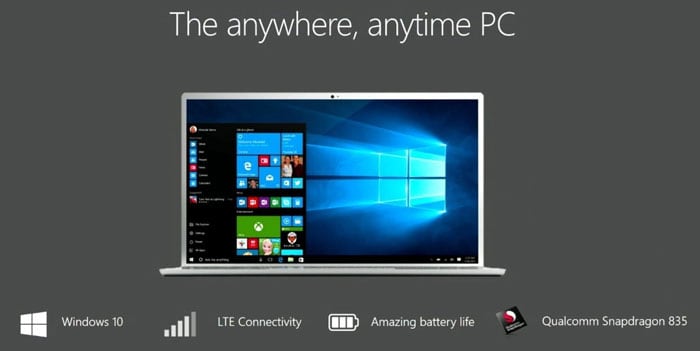Microsoft publishes then removes document detailing “necessary limitations” for Windows 10 on ARM
3 min. read
Published on
Read our disclosure page to find out how can you help Windows Report sustain the editorial team Read more

Back in December, the first Windows 10 on ARM laptops from Asus and HP were revealed during Qualcomm’s Snapdragon Technology summit, and both machines are expected to be released later this year. Together, Qualcomm, Microsoft and PC OEMs will try to shake the PC market with “Always Connected PCs,” which are ultrathin machines with instant-on capabilities, integrated LTE and great battery life.
For the first time ever, we’ll soon see full Windows 10 running on an ARM processor (the Qualcomm Snapdragon 835), and Windows 10 on ARM seems to be exactly what Windows RT should have been back in 2012. Microsoft previously explained that Windows 10 on ARM should support legacy Win32 apps through emulation, but the OS will still have some limitations compared to the same Windows 10 running on an x86 processor.
Last week, Microsoft published a document detailing the limitations of Windows 10 on ARM (via Thurrott.com). The information has since been removed from the Windows Dev Center website, but here are the highlights:
- The OS will only support ARM64 drivers, which means that some of your old peripherals which only have x86 drivers won’t be compatible.
- If Windows 10 on ARM will be able to run legacy Win32 apps through emulation, the OS will only support 32-bit apps, not 64-bit apps. This shouldn’t be an issue for popular apps such as Google Chrome or VLC which are both available in 32-bit and 64-bit flavours.
- Games that use a version of OpenGL later than 1.1 or that require hardware-accelerated OpenGL won’t work on Windows 10 on ARM. Additionally, games that use anti-cheat drivers won’t be supported.
- Apps that customize the Windows experience such as input method editors and assistive technologies may not work on Windows 10 on ARM. Microsoft also included in this category all apps that use shell extensions, including cloud storage apps which add badges on Files or additions to right-click menus.
- You won’t be able to use Hyper-V to run virtual machines on Windows 10 on ARM.
Some of these limitations will probably be a dealbreaker for power users, and Microsoft and its partners will have a lot of work to do to educate consumers about the differences with x86 PCs. Yes, Windows 10 on ARM should pretty much work like “full” Windows 10, but it’s almost guaranteed that some early-adopters will complain about peripherals and apps that don’t work properly. The performance of emulated Win32 apps also remains a big question, and we won’t really have the answer until Asus and HP ship their first Windows 10 on ARM PCs later this year.








